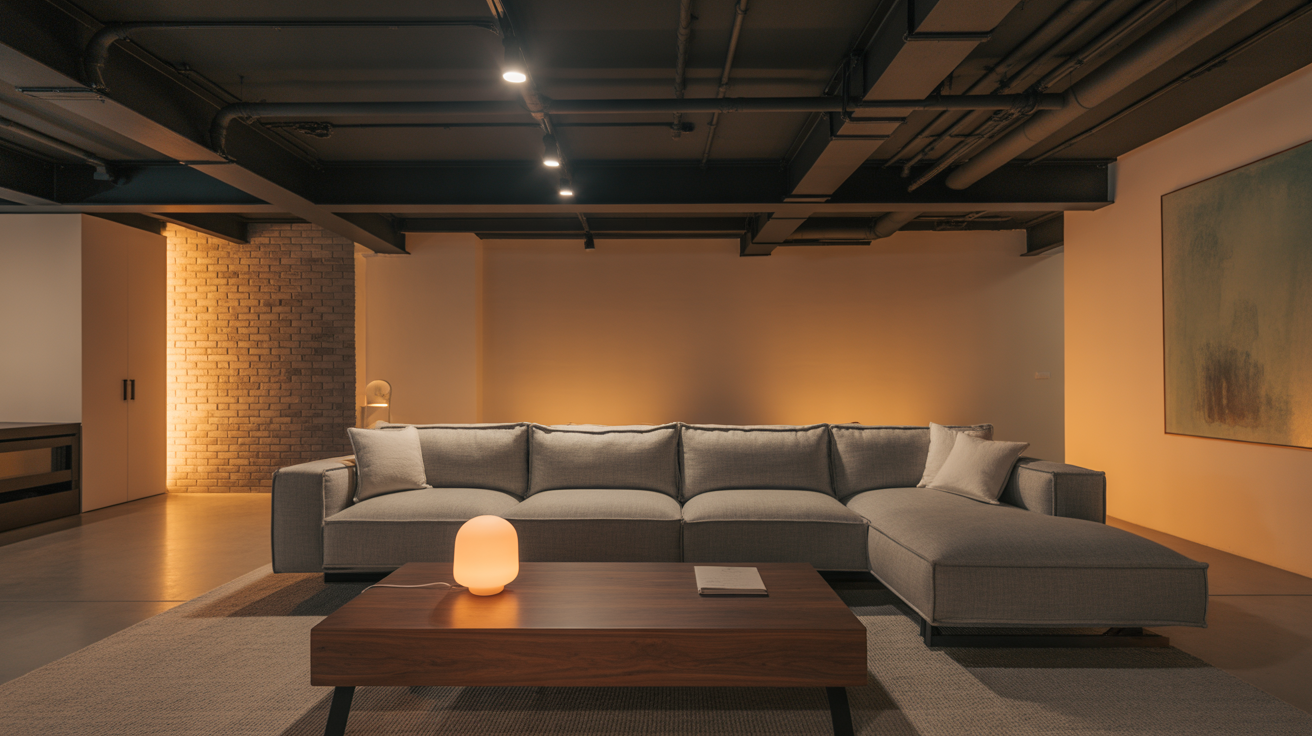If you’re renovating your basement and want a stylish, budget-friendly ceiling idea, exposed designs might be just what you need.
Instead of covering everything with drywall or drop tiles, try leaving the ceiling open – you’ll be surprised how much it transforms the space.
Not only does this approach save on materials and labor, but it also adds depth and personality that’s often overlooked.
If you’re after a modern industrial feel, rustic charm, or a cozy creative vibe, an exposed ceiling can make your basement feel taller, brighter, and more inviting.
I was amazed at how versatile this idea is – it works in family rooms, home gyms, and even entertainment lounges.
In this article, I’ll share exposed basement ceiling designs that really stood out to me. They might just inspire the perfect upgrade for your space too.
Why Choose an Exposed Basement Ceiling?
Opting for an exposed ceiling in your basement offers several advantages:
- Cost-Effective: Avoiding the installation of drywall or drop ceilings can significantly reduce renovation expenses.
- Increased Headroom: Exposed ceilings maximize vertical space, making basements feel more open and less cramped.
- Easy Access: With pipes, ducts, and wiring visible, maintenance and future upgrades become more straightforward.
- Design Flexibility: Exposed ceilings provide a blank canvas for various design styles, from industrial to rustic.
- Time-Saving Installation: Skipping the framing, drywalling, and finishing processes speeds up your renovation timeline, great for DIYers or quick upgrades.
- Budget-Friendly Aesthetics: A can of paint or some well-placed lighting can transform exposed ceilings into stylish, intentional design features, without major investment.
- Natural Character: Exposed beams, joists, and hardware can bring warmth, charm, or even a vintage look, especially in older homes.
- Custom Lighting Opportunities: Open ceilings allow for flexible placement of pendant lights, track lighting, or even string lights for ambiance.
By embracing the raw elements of your basement’s structure, you can create a space that’s both functional and visually appealing.
Creative Exposed Basement Ceiling Ideas
To upgrade your basement without covering up the ceiling, these creative ideas turn exposed ceilings into standout design features.
1. Painted Ceilings for a Unified Look
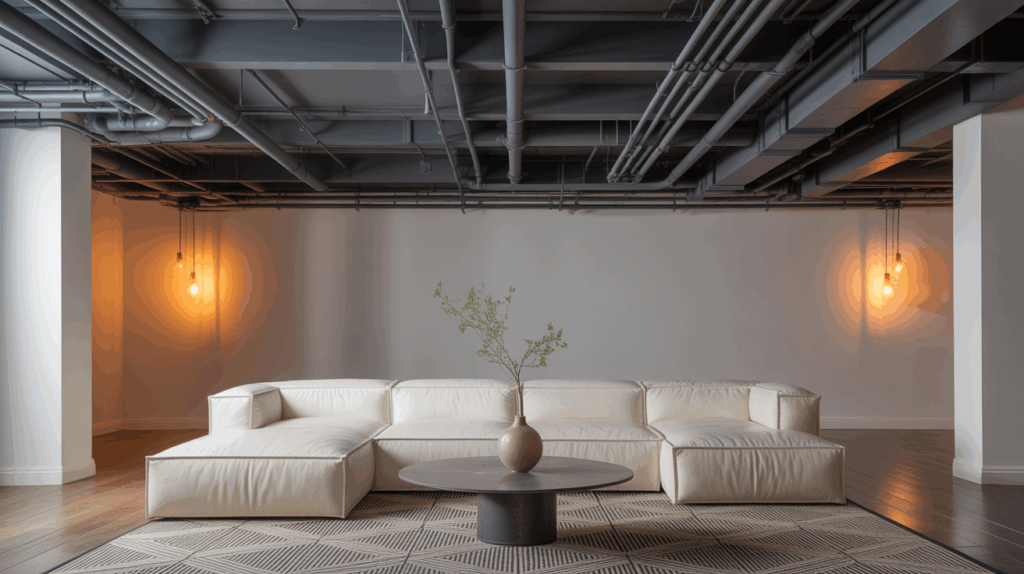
Painting the exposed elements of your basement ceiling, beams, pipes, and ductwork can create a cohesive and polished appearance.
Dark colors like black or charcoal gray add depth and an industrial feel, while lighter shades like white or soft gray can brighten the space and make it feel more expansive.
This approach is both budget-friendly and effective in transforming the overall ambiance of the basement.
2. Highlighting Natural Wood Beams
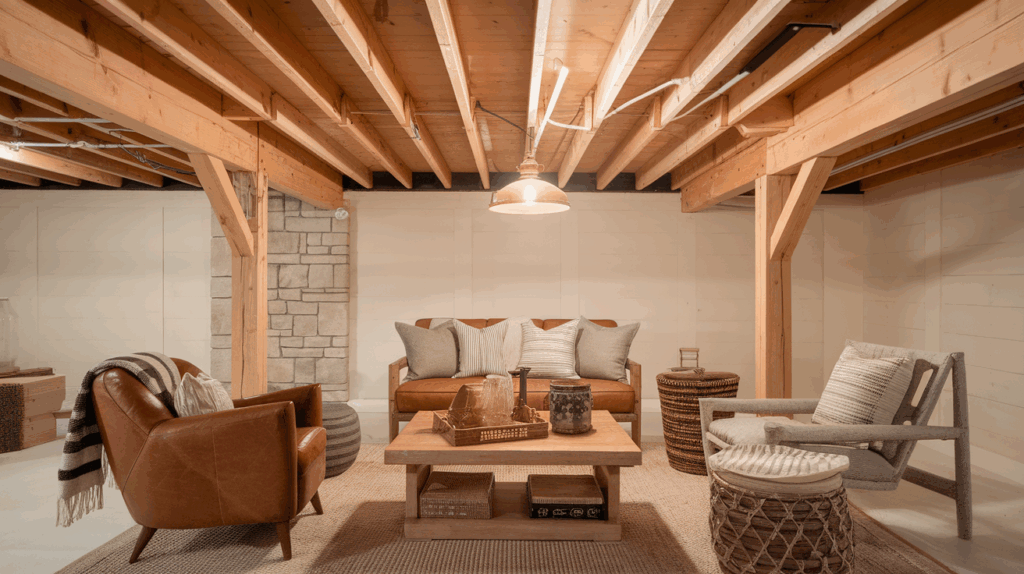
If your basement features wooden beams, consider showcasing them to add warmth and rustic charm.
Sanding and staining the beams can enhance their natural beauty, making them a focal point of the room.
Pairing exposed wood beams with complementary elements like stone walls or vintage lighting fixtures can further accentuate the rustic aesthetic.
3. Incorporating Corrugated Metal Panels
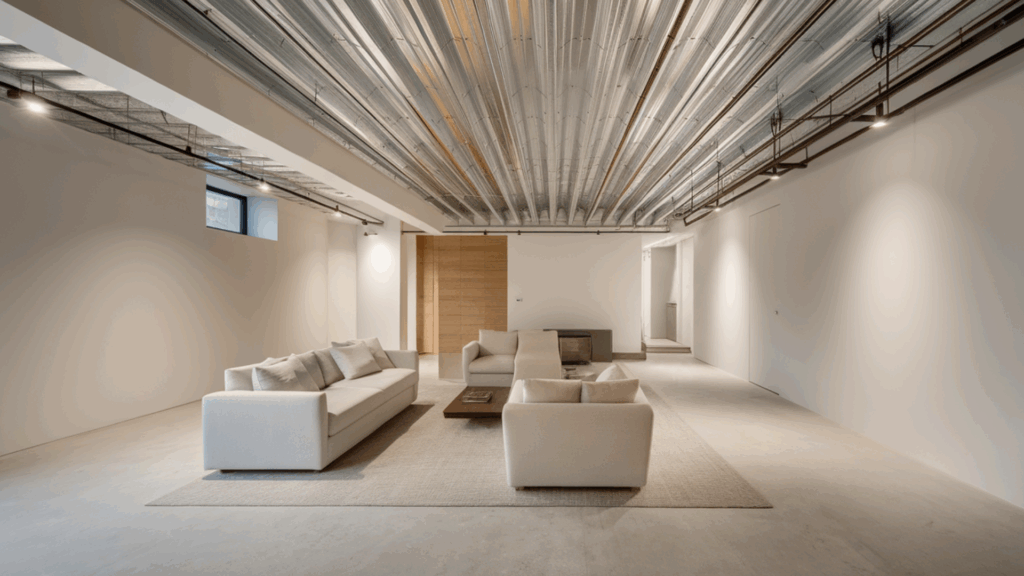
For a modern industrial look, install corrugated metal panels between the ceiling joists.
The reflective surface of the metal can help distribute light throughout the space, making it feel brighter.
This design choice pairs well with minimalist decor and can be complemented with industrial-style lighting fixtures.
4. Installing Tin Ceiling Tiles
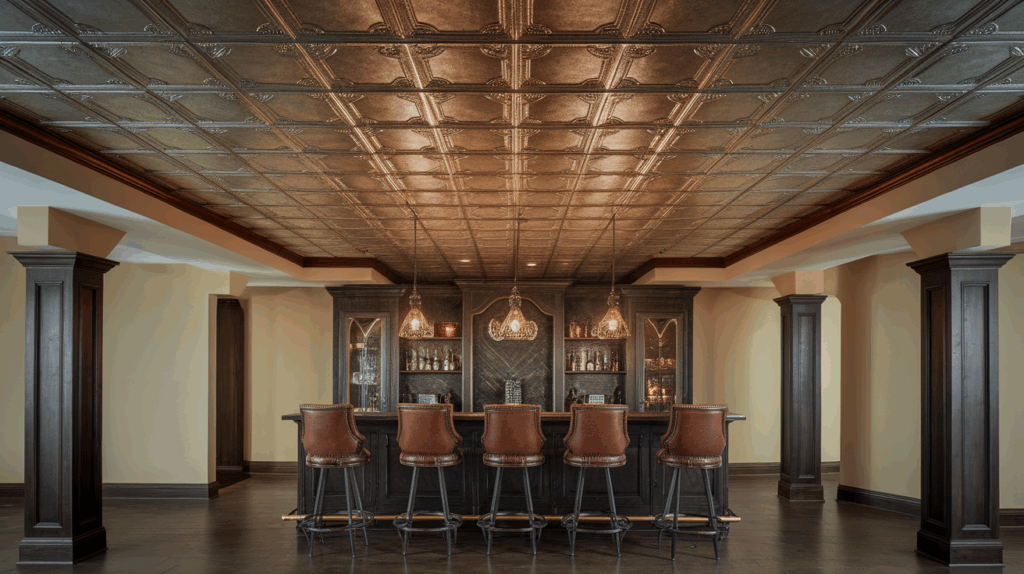
Tin ceiling tiles offer a vintage appeal that’s both elegant and timeless.
Available in various patterns and finishes, these tiles can be installed directly onto the ceiling joists or over a grid system.
They add texture and visual interest, making them ideal for basements transformed into entertainment areas or home bars.
5. Draping Fabric for a Soft Touch
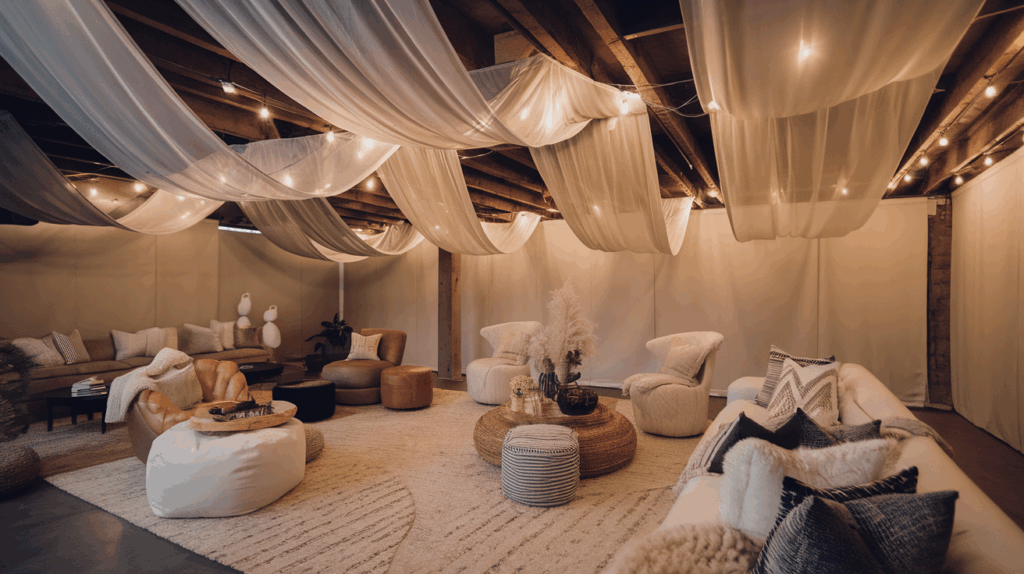
Hanging fabric panels or drapes from the ceiling can soften the industrial feel of exposed elements.
Choose lightweight fabrics in neutral tones to create a cozy and inviting atmosphere.
This method also helps in concealing unsightly pipes or wiring while adding a touch of elegance to the space.
6. Creating a Mural or Artistic Ceiling
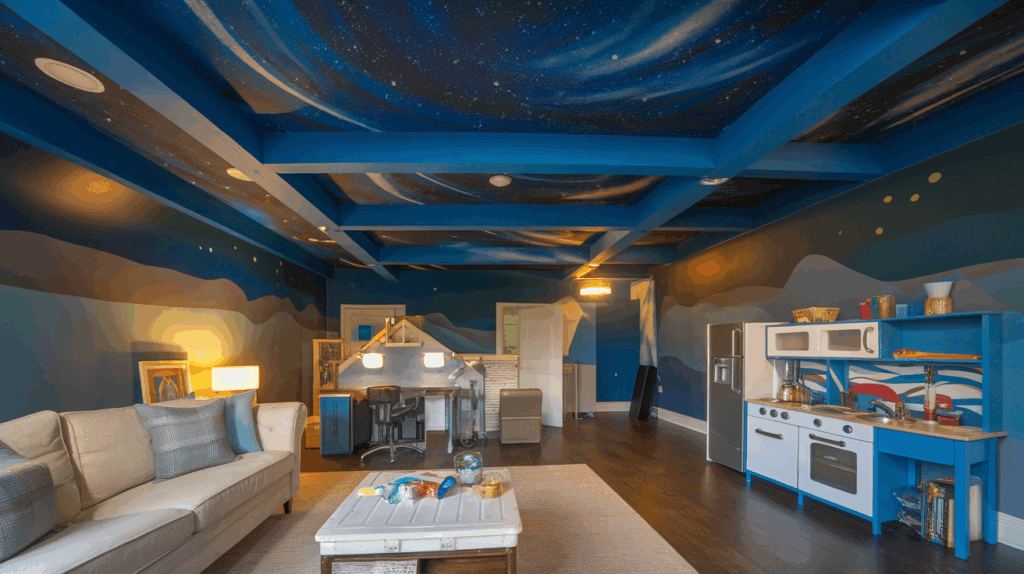
Transform your basement ceiling into a canvas by painting a mural or artistic design.
Whether it’s a starry night sky, abstract patterns, or thematic artwork, a painted ceiling can become a unique focal point.
This approach allows for personal expression and can be tailored to match the overall theme of your basement.
7. Embracing Industrial Elements
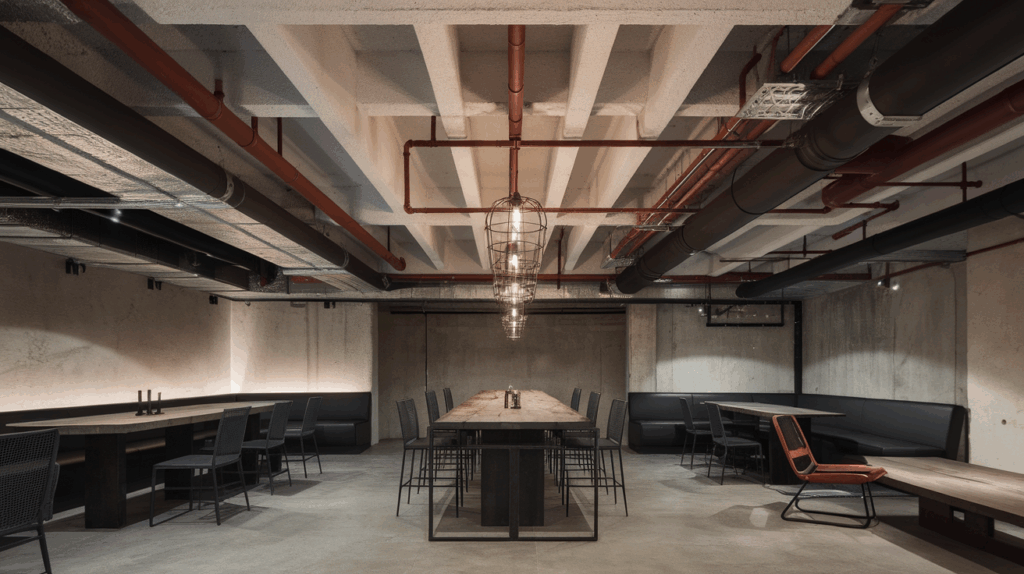
Instead of hiding pipes and ductwork, consider highlighting them as part of the design.
Painting these elements in bold colors or metallic finishes can turn them into intentional design features.
Pairing exposed mechanical components with industrial lighting and minimalist furniture can create a cohesive industrial aesthetic.
8. Utilizing String Lights for Ambiance
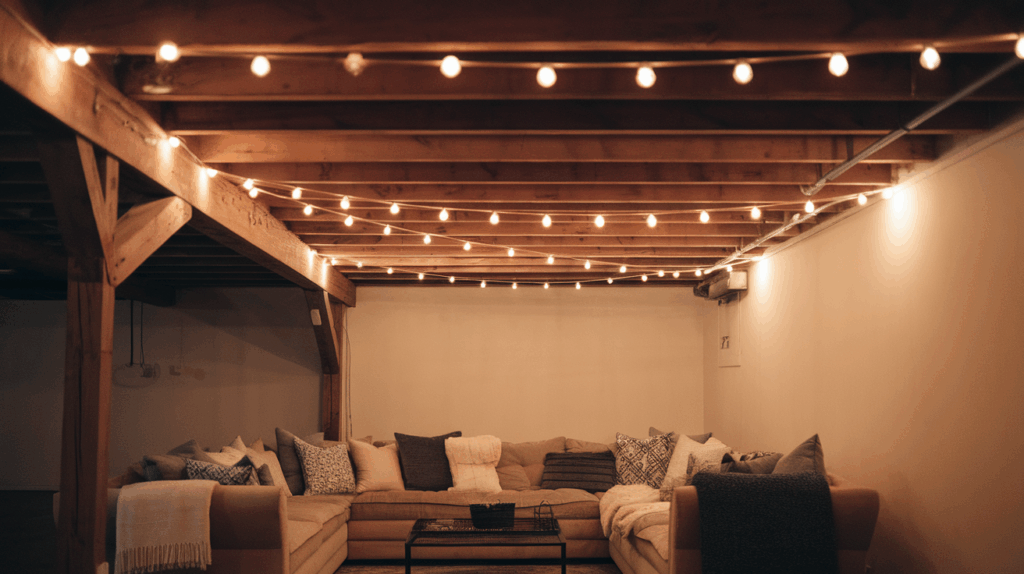
String lights can add warmth and ambiance to your basement.
Drape them along beams or around the perimeter of the ceiling to create a cozy and inviting environment.
This lighting solution is both affordable and versatile, suitable for various basement functions, from relaxation areas to entertainment zones.
9. Combining Exposed and Finished Sections
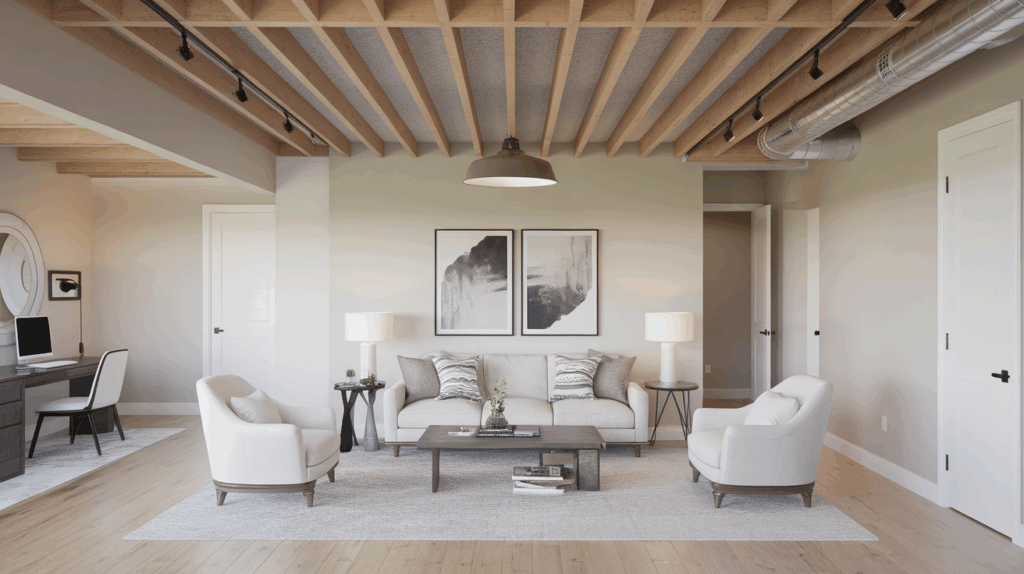
For a balanced look, consider combining exposed ceiling sections with finished areas.
For instance, you might leave beams and ductwork visible in the main area while installing drywall or paneling in specific zones like a home office or guest room.
This approach allows for functional differentiation within the basement while maintaining an overall cohesive design.
10. Painting Beams in Contrasting Colors
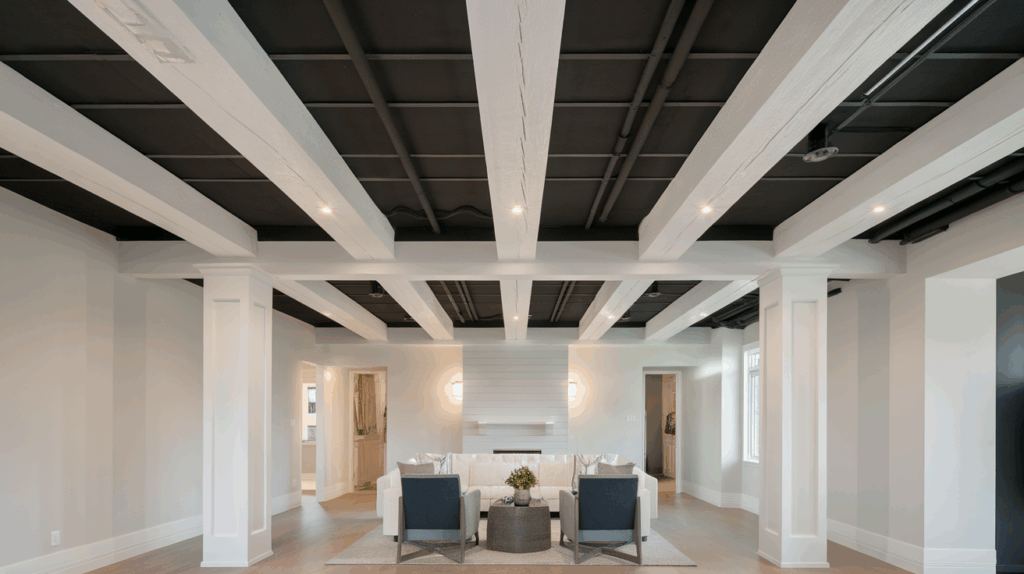
Add visual interest by painting ceiling beams in contrasting colors.
For example, white-painted beams against a dark ceiling can create a striking effect.
This technique emphasizes architectural features and can be tailored to suit various design styles, from contemporary to traditional.
11. Incorporating Reclaimed Materials
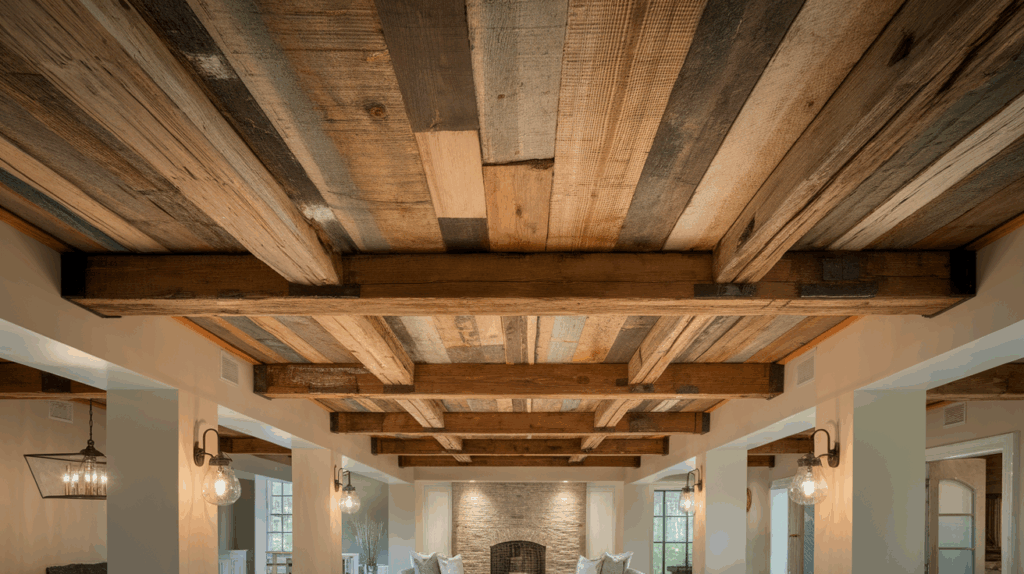
Using reclaimed wood or metal for ceiling treatments adds character and sustainability to your basement design.
These materials bring a sense of history and uniqueness, making your space stand out.
Reclaimed elements can be used for beam wraps, paneling, or decorative accents, contributing to a warm and inviting atmosphere.
Tips for Enhancing Your Exposed Basement Ceiling
- Lighting: Incorporate various lighting sources, such as recessed lights, pendant fixtures, or track lighting, to illuminate the space effectively.
- Color Coordination: Ensure that ceiling colors and materials complement the overall color scheme of your basement for a harmonious look.
- Soundproofing: Consider adding insulation or acoustic panels between joists to reduce noise transmission.
- Maintenance: Regularly clean exposed elements to prevent dust accumulation and maintain a polished appearance.
Conclusion
An exposed basement ceiling doesn’t have to feel like a last resort – it can be a statement piece.
Through my own research and design explorations, I’ve seen how this approach opens up a world of creative possibilities.
Even if you’re drawn to the clean simplicity of a painted ceiling or the bold character of reclaimed wood and metal, there’s a design here that can work for you.
What I love most is how customizable these ideas are.You can highlight your space’s original charm or use lighting, color, and texture to transform the atmosphere completely.
Plus, with easier access to wiring and ducts, you’re set up for smart functionality too.
If you’re thinking about giving your basement ceiling some attention, don’t shy away from going exposed.
Use this opportunity to mix design with practicality, and create a space that feels both elevated and uniquely yours.

